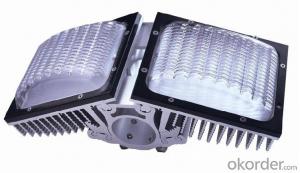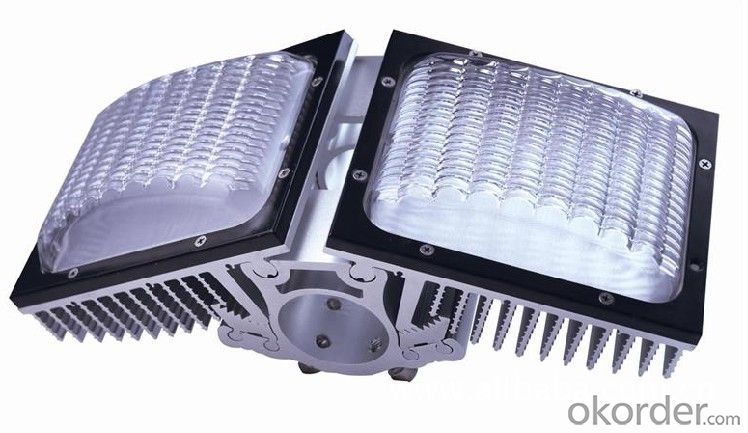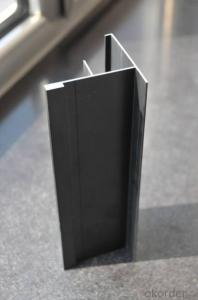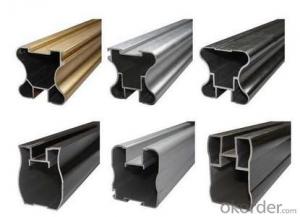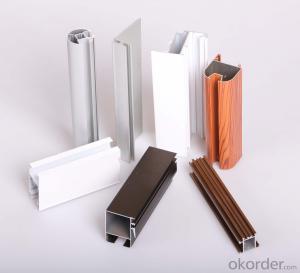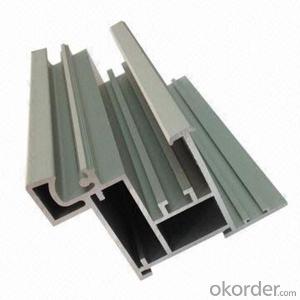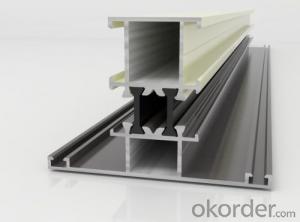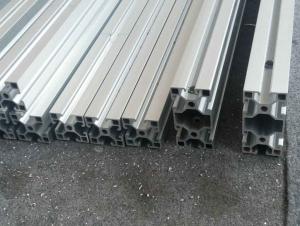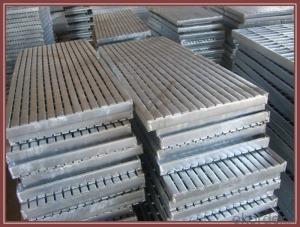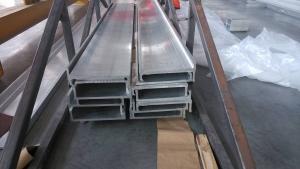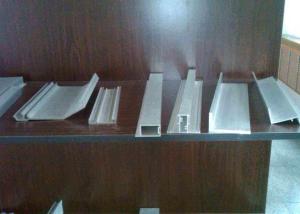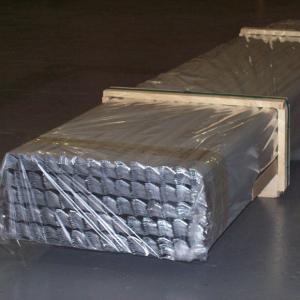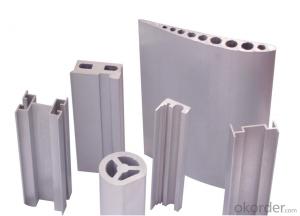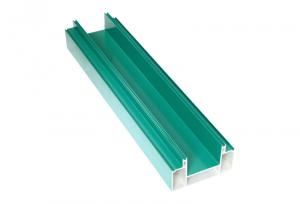Aluminum Alloy Profile Accessories for LED Frame
OKorder Service Pledge
OKorder Financial Service
You Might Also Like
Weare the largest aluminum profile manufacture in
The detail descriptions of aluminum profile as bellowing:
Alloy Aluminum 6063,6061,6005,6082 or customer nominated | |
Temper | T3, T4, T5, T6 and other |
Surface | Anodize, electrophoresis, powder coating, PVDF coating, wood grain painting, etc. |
Colour | Any colour based on Standard Germany RAL Mark |
Length | Not more than 16 meters |
Good Package | Inner plastic film /outside carton/wooden pallets |
Payment Method | T/T, L/C, etc |
Delivery Time | Normally 2-4 weeks, Delivery time can be consulted. |
Press Machine | 500-12500 tons all together 93 press lines. |
Fabrication | 1. LED frame; 2. Drilling; 3. Bending; 4. Cutting; 5. etc. |
Certificate | ISO/TS 16949,DNV,IRIS,CCS,AFA,etc. |
Dies | 1. Using our dies, no fee; |
2. Using customer drawing, opening dies, usually about 5~50 tons then the dies cost can be refunded. | |
3. Die cost is negotiable base on the order quantity | |
Capability | Annual output 800,000 tons |
- Q: Can aluminum profiles be used for modular office partitions?
- Yes, aluminum profiles can be used for modular office partitions. Aluminum profiles are lightweight, durable, and have high strength-to-weight ratio, making them an ideal choice for creating modular office partitions. They can be easily fabricated into various shapes and sizes, allowing for customization and flexibility in design. Additionally, aluminum profiles offer excellent corrosion resistance, ensuring long-lasting performance even in high humidity environments. They also provide good thermal and sound insulation properties, contributing to a comfortable and efficient office environment. Overall, aluminum profiles are a popular choice for modular office partitions due to their versatility, durability, and aesthetic appeal.
- Q: What is the material content of 4040 aluminum alloy profiles?
- Aluminium alloy grade: 6063Silicon (Si) 0.2-0.6%,Iron (Fe) 0.35%,Copper (Cu) 0.1%,Manganese (Mn) 0.1%,Magnesium (Mg) 0.45-0.9%,Chromium (Cr) 0.1%,Zinc (Zn) 0.1%,Titanium (Ti) 0.1%Other metals accounted for 0.15% of the total,Aluminum (Al) 97.35--98.35%Shanghai Australia Hong Industrial Aluminum Co., Ltd. specializes in providing1. mold development and design2. extrusion of industrial aluminum extrusions3. industrial aluminum parts4. industrial aluminum profiles and assembly lines, tables, transmission line equipment development and installation
- Q: Can aluminum profiles be used in marine vessel manufacturing?
- Marine vessel manufacturing can indeed utilize aluminum profiles. Boats and other marine vessels are commonly constructed using aluminum due to its exceptional characteristics. Lightweight, durable, and resistant to corrosion, aluminum proves to be an ideal material for marine environments. It can endure the effects of saltwater exposure, a prevalent concern in marine applications. Moreover, aluminum profiles can be effortlessly shaped, welded, and interconnected, facilitating efficient and customizable vessel designs. This adaptability renders aluminum highly appealing to boat builders and manufacturers.
- Q: Can aluminum profiles be utilized as materials for constructing roofs?
- <p>Yes, aluminum profiles can be used for roofing materials. They are known for their durability, corrosion resistance, and lightweight properties, making them an excellent choice for roofing applications. Aluminum profiles can be shaped and joined to create a strong and weather-resistant roofing system. They are also easy to install and maintain, and can be recycled, contributing to their environmental sustainability.</p>
- Q: Can aluminum profiles be used in exhibition or trade show displays?
- Yes, aluminum profiles can be used in exhibition or trade show displays. Aluminum profiles are lightweight, durable, and versatile, making them an ideal choice for constructing exhibition displays. They can be easily assembled and disassembled, allowing for quick setup and dismantling at trade shows. Additionally, aluminum profiles can be customized to create various shapes and sizes, accommodating different exhibition booth designs. The profiles can also be easily integrated with other materials such as fabric, glass, or acrylic panels to create a visually appealing and professional display. Overall, aluminum profiles offer a cost-effective and practical solution for exhibition or trade show displays.
- Q: Is it possible to recycle aluminum profiles repeatedly without a substantial loss in their quality or functionality?
- <p>Yes, aluminum profiles can be recycled multiple times without significant degradation in performance. Aluminum is highly recyclable, and the recycling process does not compromise its properties. In fact, recycled aluminum maintains the same strength, durability, and malleability as new aluminum. This makes it an environmentally friendly material, as it reduces the need for mining new aluminum and conserves resources.</p>
- Q: How does the aluminum profile bevel come round?
- If the stitching aluminum alloy model is the same, then the cutting angle must be 45 degrees, it is possible to splice.
- Q: This question asks for guidelines to ensure the proper and safe installation of aluminum profiles.
- <p>To ensure the correct and safe installation of aluminum profiles, follow these steps: 1. Use high-quality aluminum profiles that meet industry standards. 2. Prepare the surface by cleaning and leveling it. 3. Use appropriate tools like drills, screws, and cutting equipment. 4. Follow the manufacturer's guidelines for installation. 5. Ensure proper alignment and spacing of the profiles. 6. Secure the profiles with the right fasteners and adhesives. 7. Check for any sharp edges or protrusions after installation. 8. Regularly inspect and maintain the profiles to prevent any damage or wear. By adhering to these steps, you can ensure a safe and secure installation of aluminum profiles.</p>
- Q: Explain the various methods used to connect aluminum profiles in construction.
- <p>In building construction, aluminum profiles can be joined together using several methods: 1. Mechanical fastening, which includes bolts, screws, and rivets. 2. Welding, which permanently fuses the profiles together using heat. 3. Adhesive bonding, which uses specialized adhesives to bond the profiles. 4. Clipping or snap-fit connections, which use spring-loaded clips or interlocking parts. 5. Mortise and tenon joints, where one profile has a projection that fits into a hole in another. 6. Socket and pin connections, where a pin is inserted into a socket on the profiles. These methods can be used individually or in combination, depending on the specific requirements of the construction project.</p>
- Q: What are the load-bearing capacities of aluminum profiles?
- The load-bearing capacities of aluminum profiles vary depending on factors such as the profile's shape, size, and design. It is essential to consult the manufacturer's specifications or engineering data to determine the specific load-bearing capacity of a particular aluminum profile.
Send your message to us
Aluminum Alloy Profile Accessories for LED Frame
OKorder Service Pledge
OKorder Financial Service
Similar products
Hot products
Hot Searches
Related keywords
